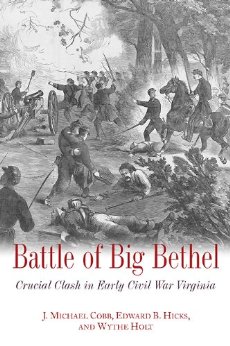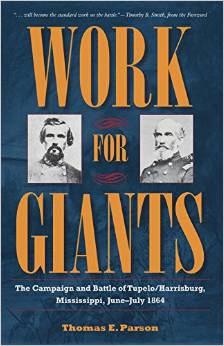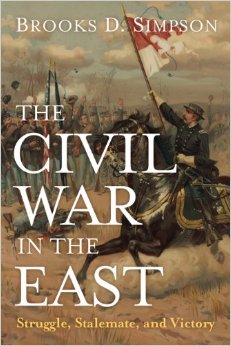Savas Beatie’s popular Emerging Civil War series presents concise titles suited for both enthusiasts and novice students of military history. Increasingly, these brief but detailed studies have shifted away from battles and battlefields; the most recent additions to the series have highlighted the people and places of the era. Brian F. Swartz’s Passing Through the Fire: Joshua Lawrence Chamberlain in the Civil War provides the latest example of this trend.
Swartz does not chronicle Chamberlain’s life from cradle to grave. Rather, he focuses almost exclusively on Chamberlain’s Civil War service. In part, the book functions not only as a retelling of its subject’s wartime experience, but also as a succinct unit history of Chamberlain’s 20th Maine Volunteer Infantry (and, to a lesser extent, the Army of the Potomac’s Fifth Corps).
Chamberlain’s war began in the summer of 1862 with his controversial departure from his professorship at Bowdoin College in Brunswick, Maine. Swartz describes the then-lieutenant colonel’s training and rather ramshackle introduction to army life. The 20th Maine temporarily lodged in cities like Boston and Arlington. According to Chamberlain’s friend, comrade, and eventual rival Ellis Spear, one of Chamberlain’s first nights was spent “‘on a downy bed of dead cats, bricks and broken bottles.’”
Chamberlain’s first armed combat came at Boteler’s Ford, a pass over the Potomac River in modern West Virginia, just a few days after Antietam. There, directing soldiers on a borrowed horse, Chamberlain barely escaped physically unscathed. His wounded mount was less fortunate—a common theme for Chamberlain.
Three months later, Chamberlain endured one of his most famous and darkest hours of the war at Fredericksburg. There, in mid-December, “The temperature plummeted, and a cold north wind shivered the living,” writes Swartz in a passage that reveals his skills as a longtime reporter and editor. “Shooting gradually ended, but no Yankee dared stand; many Northerners, in fact, stacked dead bodies into rude windbreaks and hunkered down for the night.”
Swartz goes beyond the battlefield with Chamberlain, as well, regularly examining letters to his wife, Frances, affectionately known as “Fannie.” The couple’s correspondence evidenced “love” and even “lust,” writes Swartz, though the war drove a wedge between them. Nevertheless, thanks to his growing stature as he rose through the ranks—but more often due to his repeated illnesses and wartime injuries—Chamberlain was able to visit with Fannie and their children with some regularity.
Though Chamberlain is rightfully linked to his professional career as an educator, Swartz adequately portrays an academic who willingly grew into the role of a warrior. “‘No danger & no hardship ever makes me wish to get back to the college life,’” Chamberlain penned in one quoted letter. In another, written even after suffering from several war wounds, he maintained, “‘You cannot imagine how favorable this kind of life is to my health.’”
Tracing Chamberlain’s promotions from lieutenant colonel, to colonel, and eventually to brigadier and brevet major general, Swartz underscores the officer’s most renowned episodes. However, the narrative emphasizes that other, lesser-known moments are just as important to understanding Chamberlain’s experience as his heroics on Little Round Top at Gettysburg. These include Swartz’s coverage of Chamberlain dealing with a smallpox quarantine and guarding the telegraph lines at Chancellorsville; an account of his participation in lesser-known engagements, such as Rappahannock Station; and details about how he endured the trench warfare and deadly afflictions around Petersburg.
Even with the conclusion of the Civil War, “the battered warrior” Chamberlain could not “settle into domesticity,” writes Swartz, though, “he certainly had sacrificed enough to save the Union.” With his postwar endeavors in education, government, and veterans’ affairs, Chamberlain’s legend grew even as his personal life suffered. These subjects are eloquently covered in a foreword by Thomas Desjardin and with appendices from the historians Ashley Towle and Ryan Quint. Another appendix likewise showcases several “Joshua L. Chamberlain Sites to Visit in Maine.”
In Passing Through the Fire, Brian Swartz succinctly yet thoroughly reaches beyond the Chamberlain mythology to reveal how the Civil War impacted one man so deeply.
Codie Eash serves as Director of Education and Museum Operations at Seminary Ridge Museum and Education Center in Gettysburg, Pennsylvania. He operates the independent Facebook blog “Codie Eash – Writer and Historian” and is a founding contributor to PennCivilWar.com.





